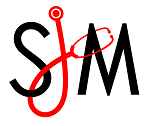On misdiagnosis and buzzwords
It is probably a truism that most medical students have wondered during their academic careers what bearing the frequent testing they are forced to undergo has on their future careers as physicians. A recent case study might be small reason to suspect that “studying for the test” may have a detrimental effect on clinical practice. Goldstein and Eidelman present two cases wherein patients with hypoglossal nerve palsy were misdiagnosed as cases of bulbar onset amyotrophic lateral sclerosis (bALS).1 bALS is not curable and patient’s usually have a prognosis of less than two years, so misdiagnosing hypoglossal palsy, a disorder that, depending on its etiology, tends to be more treatable, and at the very least, less life-threatening, is a serious medical error, and a cause of great personal suffering to the patients. In one of the cases, the patient had a cyst that was compressing her hypoglossal canal, a problem that can be solved with a rather simple procedure, but she only discovered this after she went for a second opinion at the neurological clinic of the paper’s authors.
In both cases the patients presented with hemi-tongue atrophy and fasciculations, which the authors suspect led to their initial misdiagnosis as bALS cases. Since bALS is a diagnosis of exclusion, requiring physicians to entertain multiple diagnoses before establishing one of bALS, it might seem that these issues of misdiagnosis are examples of sloppy medical practice and hasty thinking. The paper even ends with the authors admonishing physicians to remember that “not all that fasciculates is ALS.” However, it seems to me that these case studies reveal a deeper issue with the medical community, an issue that goes back to the type of medical education that most clinicians receive.
As medical students, a large part of our time is spent preparing for the United States Medical Licensing Examinations (USMLE), particularly USMLE step 1, which plays a decisive role in determining which residency program a student will be accepted to. The sheer amount of facts and details that a student is required to know for Step 1, coupled with the relatively small amount of time that they have to answer the questions, has led most students to use test-taking strategies that focus on quickly finding out which disorder the clinical vignette is describing. This has led students to focus on learning “buzzwords”, clues in the text of the vignette that point toward one or more clinical conditions. For example, most students know that if the question specifies that the patient is from the Great Lakes region or southern California, the case is likely one of a local fungal infection, whereas if the question specifies the patient recently immigrated to the United States that means that he is probably unvaccinated.
It is understandable that students will need to rely on this type of thinking in order to do well on their standardized exams, especially since the exams are in fact repetitive, and relying on these clues and hints is very helpful, if not required. Moreover, it is possible that most students understand that this type of thinking is different from the broad, inclusive thinking that is required in clinical practice. However, exam after exam beats this mentality into medical students, and while actual clinical experience might help to loosen its grip, a part of it always remains there. And so it is unsurprising when patients who present with tongue atrophy and fasciculations are automatically misdiagnosed as bALS cases. It is not because the clinicians are bad at their job or ignorant, but because as soon as they saw these two distinct symptoms, their minds immediately went to bALS, and while they might have listened and examined the patients further, those buzzwords remained in the back of their minds.
The question then arises: how should medical education be structured so as to aid in our future clinical practice? It is my personal contention that the increasing overreliance that residency directors have on standardized medical exams has, almost inevitably, led medical schools to structure their curriculum towards preparing for these tests, and that any large scale change would need to be top-down. But leaving that aside, having students participate in more clinical practice, such as working with patient-actors or working through a clinical case together, may be a good way of breaking the mentality inculcated by these standardized exams. So instead of having students trying to figure out which subset of lung cancer a patient presents with based on some keywords in a passage, students can be presented with a more vague case (e.g. patients with symptoms that do not perfectly match up with one diagnosis) and be asked to work up a differential diagnosis or decide which panel of tests they should order. The practice would still be academically rigorous (students can be asked to explain why they included something in the differential diagnosis or why they selected one test over another) while also having students engage in more broad, conceptual analysis. Of course, such things do happen in most medical schools, but it is often relegated to a sideshow, while the all-determining exams take center stage. Perhaps administrators placing more emphasis on this aspect of medical education over test-scores, may be a modest start to raising a generation of physicians that is able to approach diseases in the analytical framework that they require. For if diseases, as the old adage goes, do not read the textbook, then they definitely do not take the USMLE’s.
References:
1. Goldstein ED, Eidelman BH. Misdiagnosis: Hypoglossal palsy mimicking bulbar onset amyotrophic lateral sclerosis. eNeurologicalSci. 2018;14:6–8. Published 2018 Nov 22. doi:10.1016/j.ensci.2018.11.028
